|
|
Thermokarst Failures
Arctic warming will promote permafrost degradation and thaw. Formerly frozen soils may be further destabilized by increased precipitation, leading to 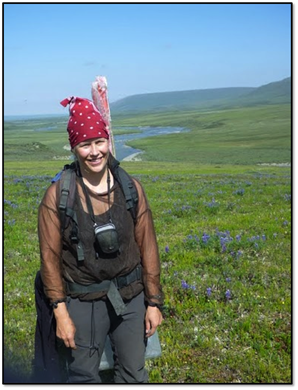 hillslope thermokarst failures. Thermokarst failures are abundant and appear to have become more numerous around Toolik Lake on the eastern North Slope and in the western Noatak River basin in Alaska. We hypothesize that a widespread and long-term increase in the incidence of thermokarst failures will have important impacts on the structure and function of arctic headwater landscapes. The Schimel lab is part of an NSF-funded project that proposes to use a systems approach to address hypotheses about how thermokarst failures influence the structure and function of the arctic landscape. Specifically this project will focus on the composition of vegetation, the distribution and processing of soil nutrients, and exports of sediments and nutrients to stream and lake ecosystems. This project will link results obtained at this hillslope scale to patterns observed at the landscape scale to test hypotheses about the spatial distribution of thermokarst failures in the arctic foothills. In particular, this lab hypothesizesthat thermokarst failures mobilize organic CNP and increase soil microbial processing. These effects are a consequence of the physical disturbance and not just thawing and/or increased availability of nutrients. hillslope thermokarst failures. Thermokarst failures are abundant and appear to have become more numerous around Toolik Lake on the eastern North Slope and in the western Noatak River basin in Alaska. We hypothesize that a widespread and long-term increase in the incidence of thermokarst failures will have important impacts on the structure and function of arctic headwater landscapes. The Schimel lab is part of an NSF-funded project that proposes to use a systems approach to address hypotheses about how thermokarst failures influence the structure and function of the arctic landscape. Specifically this project will focus on the composition of vegetation, the distribution and processing of soil nutrients, and exports of sediments and nutrients to stream and lake ecosystems. This project will link results obtained at this hillslope scale to patterns observed at the landscape scale to test hypotheses about the spatial distribution of thermokarst failures in the arctic foothills. In particular, this lab hypothesizesthat thermokarst failures mobilize organic CNP and increase soil microbial processing. These effects are a consequence of the physical disturbance and not just thawing and/or increased availability of nutrients.
The Arctic is a “belowground” dominated system. Enormous pools of carbon are stored in the soil (Mack et al. 2004), although this carbon is vulnerable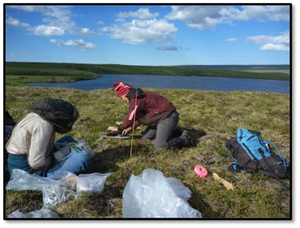 to accelerated decomposition with elevated N availability (Mack et al. 2004, unpublished data), plant productivity is strongly nutrient limited (Chapin et al. 1995, Schimel et al. 1996, Nadelhoffer et al. 1992), and the quantity and quality of dissolved organic matter that flows into surface waters is controlled by soil processes regulating DOC and DON dynamics (Johnson et al. 1996). As the soil environment changes, all these processes change, driving the feedbacks between plants, soil, and the atmosphere (Sturm et al. 2005, Weintraub and Schimel 2005, Chapin et al. 2005). Understanding how thermokarst events alter the overall functioning of the arctic system to accelerated decomposition with elevated N availability (Mack et al. 2004, unpublished data), plant productivity is strongly nutrient limited (Chapin et al. 1995, Schimel et al. 1996, Nadelhoffer et al. 1992), and the quantity and quality of dissolved organic matter that flows into surface waters is controlled by soil processes regulating DOC and DON dynamics (Johnson et al. 1996). As the soil environment changes, all these processes change, driving the feedbacks between plants, soil, and the atmosphere (Sturm et al. 2005, Weintraub and Schimel 2005, Chapin et al. 2005). Understanding how thermokarst events alter the overall functioning of the arctic system 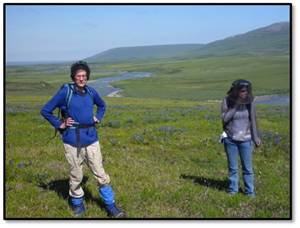 and how increasing thermokarst will change system function in the future requires that we understand how soil processes change and how they affect plant dynamics and DOC/DON loss. There are several central questions involved in evaluating the functioning of the belowground community. First, how do C, N, and P mineralization, and DOC/DON generation change as thermokarst develops and in the areas downstream where sediments are deposited? Second, how does plant uptake of limiting resources change as thermokarst develops. This work involves a balance of field measurements and lab studies tounderstand the mechanisms controlling the dynamics of the microbial community. and how increasing thermokarst will change system function in the future requires that we understand how soil processes change and how they affect plant dynamics and DOC/DON loss. There are several central questions involved in evaluating the functioning of the belowground community. First, how do C, N, and P mineralization, and DOC/DON generation change as thermokarst develops and in the areas downstream where sediments are deposited? Second, how does plant uptake of limiting resources change as thermokarst develops. This work involves a balance of field measurements and lab studies tounderstand the mechanisms controlling the dynamics of the microbial community.
Warming
Two decades of experimental greenhouse warming at the Toolik Long Term Ecological Research Site, AK (68°38’N, 149°36’W) have significantly increased shrub biomass in Arctic tundra, similar to a circumpolar “greening” that has been observed over the past half century. This greening phenomenon may positively or negatively affect Arctic C storage (the net balance of C sequestration and respiration), depending on the magnitude of increased plant growth versus increased soil C loss due to warming-stimulated decomposition. To better understand how Arctic warming alters linked aboveground and belowground biogeochemical processes, we are working to characterize moist acidic tussock tundra responses to warming using the 1989 greenhouse warming studies.
The changing seasonality of tundra plant-soil interactions
Arctic soils contain huge reservoirs of carbon that may potentially be released to the atmosphere. The dominant soil ecosystem in the Alaskan Arctic is tussock tundra. 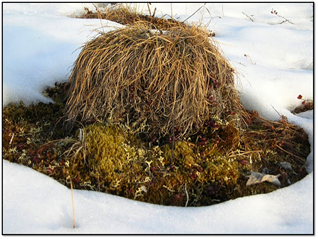 Understanding nutrient processes in tussock tundra is therefore critical to the understanding of climate change. Nitrogen (N) is a key element in this ecosystem, as both decomposition and plant growth are highly N-limited. Previous research into the tundra growing season has shown initially high levels of available N followed by a steep crash in N levels in mid-summer. The goals of this project are to determine the cause of the pronounced drop in available N, and to explore the effects of earlier snowmelt and warmer temperatures on nitrogen dynamics in tussock tundra. This is a collaborative study looking at plant, soil, and microbial processes at a site near Imnavait Creek, Alaska. Snowmelt manipulation and monitoring in order to achieve our goals was begun in Spring 2010. More information on this project is available via the following link: http://www.eeescience.utoledo.edu/Faculty/weintraub/csas.htm. Understanding nutrient processes in tussock tundra is therefore critical to the understanding of climate change. Nitrogen (N) is a key element in this ecosystem, as both decomposition and plant growth are highly N-limited. Previous research into the tundra growing season has shown initially high levels of available N followed by a steep crash in N levels in mid-summer. The goals of this project are to determine the cause of the pronounced drop in available N, and to explore the effects of earlier snowmelt and warmer temperatures on nitrogen dynamics in tussock tundra. This is a collaborative study looking at plant, soil, and microbial processes at a site near Imnavait Creek, Alaska. Snowmelt manipulation and monitoring in order to achieve our goals was begun in Spring 2010. More information on this project is available via the following link: http://www.eeescience.utoledo.edu/Faculty/weintraub/csas.htm.
Freeze-thaw
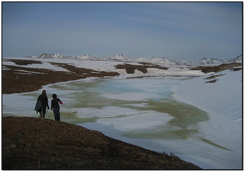 Through a combination of field and laboratory work using chemical, genetic, and proteomic analyses, we will evaluate the balance of substrate and winter survival abilities in regulating microbial distribution in the Arctic and will evaluate the ecosystem consequences of the physiological costs associated with functioning through the long, cold, dark winters of the Arctic. For a more complete description of our freeze-thaw project, please refer to our Greenland/Hight Arctic page. Through a combination of field and laboratory work using chemical, genetic, and proteomic analyses, we will evaluate the balance of substrate and winter survival abilities in regulating microbial distribution in the Arctic and will evaluate the ecosystem consequences of the physiological costs associated with functioning through the long, cold, dark winters of the Arctic. For a more complete description of our freeze-thaw project, please refer to our Greenland/Hight Arctic page.
|
|
| |
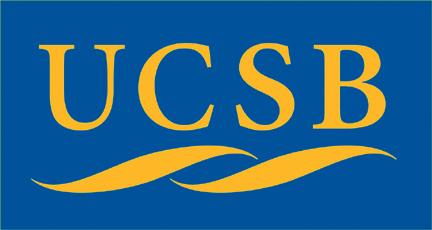 |
|
.
|
|
|

 hillslope thermokarst failures. Thermokarst failures are abundant and appear to have become more numerous around Toolik Lake on the eastern North Slope and in the western Noatak River basin in Alaska. We hypothesize that a widespread and long-term increase in the incidence of thermokarst failures will have important impacts on the structure and function of arctic headwater landscapes. The Schimel lab is part of an NSF-funded project that proposes to use a systems approach to address hypotheses about how thermokarst failures influence the structure and function of the arctic landscape. Specifically this project will focus on the composition of vegetation, the distribution and processing of soil nutrients, and exports of sediments and nutrients to stream and lake ecosystems. This project will link results obtained at this hillslope scale to patterns observed at the landscape scale to test hypotheses about the spatial distribution of thermokarst failures in the arctic foothills. In particular, this lab hypothesizesthat thermokarst failures mobilize organic CNP and increase soil microbial processing. These effects are a consequence of the physical disturbance and not just thawing and/or increased availability of nutrients.
hillslope thermokarst failures. Thermokarst failures are abundant and appear to have become more numerous around Toolik Lake on the eastern North Slope and in the western Noatak River basin in Alaska. We hypothesize that a widespread and long-term increase in the incidence of thermokarst failures will have important impacts on the structure and function of arctic headwater landscapes. The Schimel lab is part of an NSF-funded project that proposes to use a systems approach to address hypotheses about how thermokarst failures influence the structure and function of the arctic landscape. Specifically this project will focus on the composition of vegetation, the distribution and processing of soil nutrients, and exports of sediments and nutrients to stream and lake ecosystems. This project will link results obtained at this hillslope scale to patterns observed at the landscape scale to test hypotheses about the spatial distribution of thermokarst failures in the arctic foothills. In particular, this lab hypothesizesthat thermokarst failures mobilize organic CNP and increase soil microbial processing. These effects are a consequence of the physical disturbance and not just thawing and/or increased availability of nutrients.  to accelerated decomposition with elevated N availability (Mack et al. 2004, unpublished data), plant productivity is strongly nutrient limited (Chapin et al. 1995, Schimel et al. 1996, Nadelhoffer et al. 1992), and the quantity and quality of dissolved organic matter that flows into surface waters is controlled by soil processes regulating DOC and DON dynamics (Johnson et al. 1996). As the soil environment changes, all these processes change, driving the feedbacks between plants, soil, and the atmosphere (Sturm et al. 2005, Weintraub and Schimel 2005, Chapin et al. 2005). Understanding how thermokarst events alter the overall functioning of the arctic system
to accelerated decomposition with elevated N availability (Mack et al. 2004, unpublished data), plant productivity is strongly nutrient limited (Chapin et al. 1995, Schimel et al. 1996, Nadelhoffer et al. 1992), and the quantity and quality of dissolved organic matter that flows into surface waters is controlled by soil processes regulating DOC and DON dynamics (Johnson et al. 1996). As the soil environment changes, all these processes change, driving the feedbacks between plants, soil, and the atmosphere (Sturm et al. 2005, Weintraub and Schimel 2005, Chapin et al. 2005). Understanding how thermokarst events alter the overall functioning of the arctic system  and how increasing thermokarst will change system function in the future requires that we understand how soil processes change and how they affect plant dynamics and DOC/DON loss. There are several central questions involved in evaluating the functioning of the belowground community. First, how do C, N, and P mineralization, and DOC/DON generation change as thermokarst develops and in the areas downstream where sediments are deposited? Second, how does plant uptake of limiting resources change as thermokarst develops. This work involves a balance of field measurements and lab studies tounderstand the mechanisms controlling the dynamics of the microbial community.
and how increasing thermokarst will change system function in the future requires that we understand how soil processes change and how they affect plant dynamics and DOC/DON loss. There are several central questions involved in evaluating the functioning of the belowground community. First, how do C, N, and P mineralization, and DOC/DON generation change as thermokarst develops and in the areas downstream where sediments are deposited? Second, how does plant uptake of limiting resources change as thermokarst develops. This work involves a balance of field measurements and lab studies tounderstand the mechanisms controlling the dynamics of the microbial community.  Understanding nutrient processes in tussock tundra is therefore critical to the understanding of climate change. Nitrogen (N) is a key element in this ecosystem, as both decomposition and plant growth are highly N-limited. Previous research into the tundra growing season has shown initially high levels of available N followed by a steep crash in N levels in mid-summer. The goals of this project are to determine the cause of the pronounced drop in available N, and to explore the effects of earlier snowmelt and warmer temperatures on nitrogen dynamics in tussock tundra. This is a collaborative study looking at plant, soil, and microbial processes at a site near Imnavait Creek, Alaska. Snowmelt manipulation and monitoring in order to achieve our goals was begun in Spring 2010. More information on this project is available via the following link:
Understanding nutrient processes in tussock tundra is therefore critical to the understanding of climate change. Nitrogen (N) is a key element in this ecosystem, as both decomposition and plant growth are highly N-limited. Previous research into the tundra growing season has shown initially high levels of available N followed by a steep crash in N levels in mid-summer. The goals of this project are to determine the cause of the pronounced drop in available N, and to explore the effects of earlier snowmelt and warmer temperatures on nitrogen dynamics in tussock tundra. This is a collaborative study looking at plant, soil, and microbial processes at a site near Imnavait Creek, Alaska. Snowmelt manipulation and monitoring in order to achieve our goals was begun in Spring 2010. More information on this project is available via the following link: 
